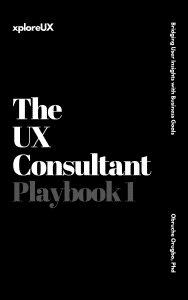
Manufacturing Efficiency and Growth is an essential focus for companies striving to refine their production methods and achieve sustainable progress. By incorporating user experience (UX) strategies into their processes, manufacturers are witnessing improvements in operational safety, employee satisfaction, and overall productivity. This article explores how carefully designed UX initiatives can support Manufacturing Efficiency and Growth through practical examples and actionable insights.
Manufacturing Efficiency and Growth stands as a critical goal for modern production organisations. With the increasing complexity of manufacturing systems, integrating UX principles has emerged as a powerful way to simplify processes, reduce errors, and foster a safer, more productive work environment. Organisations that invest in UX strategies benefit from more intuitive interfaces, streamlined workflows, and clearer communication channels between technology and human operators. As manufacturers seek to transform their operations, they recognise that UX is not merely an aesthetic enhancement but a strategic tool for achieving Manufacturing Efficiency and Growth.
The significance of UX in manufacturing can be observed across various sectors. From automotive assembly lines to electronics production units, companies are realising that a focus on the end-user—whether that user is a machine operator, engineer, or maintenance staff—can result in significant improvements. In this article, we will examine several real-world examples of how UX strategies have improved manufacturing processes and contributed directly to Manufacturing Efficiency and Growth. By understanding these strategies, organisations can better implement solutions that enhance productivity and drive long-term success.
User experience is no longer confined to consumer products and digital interfaces; it has become a central component of production processes. In manufacturing environments, UX involves designing interfaces, control systems, and monitoring tools that are intuitive, accessible, and effective. When these elements are crafted with the user in mind, the outcome is a more engaged workforce, fewer errors on the production floor, and ultimately, Manufacturing Efficiency and Growth.
A key element in achieving Manufacturing Efficiency and Growth is the improvement of operator interactions with technology. Modern manufacturing equipment often incorporates complex software systems that require quick decision-making and precise actions. When operators struggle with poorly designed interfaces, productivity suffers, and the risk of mistakes increases. By contrast, UX strategies that focus on clarity and simplicity enable operators to quickly understand system statuses, respond to alerts, and perform tasks efficiently.
For instance, a leading automotive parts manufacturer implemented a redesigned control panel for its assembly robots. The new interface featured clear visual cues, colour-coded alerts, and simplified navigation menus. This change not only reduced the training time for new operators but also decreased the frequency of operational errors. Such improvements directly contribute to Manufacturing Efficiency and Growth by minimising downtime and increasing production throughput.
Effective communication between various departments—ranging from production line operators to maintenance teams—is crucial for realising Manufacturing Efficiency and Growth. UX design in this context involves creating dashboards and reporting tools that present data in a clear, actionable format. When data is easy to interpret, decision-makers can swiftly identify bottlenecks, address issues before they escalate, and optimise workflows.
Consider a case where a food processing plant introduced an integrated digital dashboard that consolidated real-time data from different stages of production. The dashboard was designed with user-centric principles, ensuring that critical information was prominently displayed and easy to understand. As a result, managers were able to implement process improvements rapidly, contributing significantly to Manufacturing Efficiency and Growth.
Implementing UX strategies in a manufacturing setting requires a systematic approach that aligns with operational goals and the specific needs of users. Below are several steps and best practices that organisations can follow to harness the power of UX for Manufacturing Efficiency and Growth.
1. Conducting User Research
The first step in any successful UX initiative is to understand the needs, challenges, and behaviours of end-users. In a manufacturing context, this means engaging with machine operators, maintenance staff, and supervisory personnel to gather insights about their daily interactions with technology. Techniques such as interviews, on-site observations, and usability testing help to identify pain points and opportunities for improvement.
By focusing on user research, manufacturers can tailor their solutions to address the real needs of their workforce, thereby creating a direct pathway to Manufacturing Efficiency and Growth. When users feel that their input is valued and that solutions are designed around their workflows, the likelihood of successful implementation increases significantly.
2. Designing Intuitive Interfaces
Once user research has provided valuable insights, the next step is to design interfaces that are both functional and easy to use. This involves employing best practices in visual hierarchy, consistent design elements, and clear navigation. A user-friendly interface reduces cognitive load and ensures that users can interact with systems without unnecessary complications.
For example, a precision engineering company overhauled its machine control software by adopting a minimalist design approach. The new system featured large, clearly labelled buttons, context-sensitive help options, and a consistent layout across different modules. These design changes contributed directly to Manufacturing Efficiency and Growth by reducing the time needed to complete tasks and minimising the risk of human error.
3. Iterative Testing and Feedback
A robust UX strategy embraces an iterative approach where continuous testing and feedback are essential. Prototyping new designs and soliciting feedback from users allows organisations to refine their interfaces and workflows progressively. This iterative cycle ensures that the final solution is optimised for actual working conditions and user requirements.
By regularly incorporating user feedback, manufacturers can adapt quickly to changing conditions and maintain a steady trajectory towards Manufacturing Efficiency and Growth. Iterative testing also helps to uncover any unforeseen issues early, saving time and resources in the long term.
4. Integrating UX into Existing Systems
Integrating UX strategies into existing manufacturing systems can be challenging, particularly when dealing with legacy equipment or outdated software. However, careful planning and phased implementation can mitigate these challenges. Organisations can start with pilot projects that target specific areas of the production process and gradually expand successful initiatives to cover the entire operation.
A well-planned integration ensures that new UX improvements complement existing processes, thereby contributing to Manufacturing Efficiency and Growth without causing significant disruptions. Over time, these small enhancements can lead to cumulative benefits that transform overall production efficiency.
Real-world examples offer compelling evidence of how UX strategies have improved manufacturing processes and fostered Manufacturing Efficiency and Growth. The following case studies illustrate diverse applications of UX principles across different industries.
Automotive Component Manufacturer
An automotive component manufacturer faced challenges with its assembly line, where frequent errors and equipment downtime were causing delays. The company decided to invest in a UX redesign of its control systems. By engaging with operators to understand their needs, the manufacturer redesigned the interface to display critical information more prominently and introduced a more intuitive alert system.
As a result, the number of operator errors decreased by over 30%, and production downtime was significantly reduced. This transformation played a pivotal role in achieving Manufacturing Efficiency and Growth, demonstrating how targeted UX interventions can yield measurable operational improvements.
Electronics Production Facility
In another instance, an electronics production facility sought to improve the accuracy of its quality control processes. The existing software was complex and difficult for operators to navigate, leading to inconsistencies in product inspection. A UX overhaul was undertaken, resulting in a simplified interface that guided operators through the inspection process step by step.
The new design included visual prompts and automated data logging, which helped operators perform their tasks with greater precision. The enhanced system contributed to Manufacturing Efficiency and Growth by reducing product defects and streamlining the quality assurance process. This case highlights the direct link between effective UX design and operational performance.
Food Processing Plant
A food processing plant implemented a digital dashboard that provided real-time visibility into every stage of its production process. The dashboard was developed with UX principles in mind, ensuring that information was accessible and actionable for both floor managers and line operators. With clearly defined alerts and easy-to-read graphics, the plant’s management was able to swiftly identify and resolve production bottlenecks.
The improved communication and transparency led to better decision-making and faster response times, directly contributing to Manufacturing Efficiency and Growth. This example serves as a testament to how UX can enhance operational oversight and drive process improvements in a highly regulated industry.
The integration of robust UX strategies into manufacturing operations can yield numerous benefits. These advantages not only improve day-to-day operations but also set the stage for long-term Manufacturing Efficiency and Growth.
Increased Productivity
A well-designed user interface enables operators to complete tasks faster and with fewer errors. This increase in productivity directly translates to a more efficient production process. By reducing the time spent on routine tasks and minimising the need for corrective actions, organisations can achieve Manufacturing Efficiency and Growth while also freeing up resources for further innovation.
Improved Safety and Reduced Errors
Manufacturing environments can be hazardous, and errors in machine operation may lead to safety incidents. UX strategies that simplify complex systems and present information in a clear manner help reduce the likelihood of accidents. Enhanced safety protocols and error reduction measures contribute significantly to Manufacturing Efficiency and Growth by ensuring a stable and secure working environment.
Enhanced Employee Engagement
When employees interact with user-friendly systems, they feel more confident and valued in their roles. Improved engagement leads to higher job satisfaction and lower turnover rates, which are essential factors for sustaining Manufacturing Efficiency and Growth. Organisations that prioritise UX not only benefit from immediate operational improvements but also from a more committed workforce.
Data-Driven Decision Making
UX designs that facilitate easy access to real-time data empower managers to make informed decisions quickly. Whether it is monitoring production metrics or responding to unexpected challenges, a clear interface allows for data-driven decision making. This agility is a key driver of Manufacturing Efficiency and Growth, as it helps companies adapt swiftly to market changes and operational demands.
As manufacturing technologies continue to evolve, the role of UX in driving Manufacturing Efficiency and Growth is set to become even more prominent. Emerging trends in augmented reality, machine learning, and real-time analytics are already beginning to influence how operators interact with complex production systems. These innovations promise to make interfaces even more intuitive and predictive, further reducing errors and improving productivity.
Embracing Emerging Technologies
One of the most exciting prospects for the future is the integration of augmented reality (AR) into manufacturing processes. AR can provide on-the-job training, assist in maintenance tasks, and even offer real-time guidance during critical operations. By designing UX solutions that incorporate AR, manufacturers can create immersive experiences that support Manufacturing Efficiency and Growth. These technologies enable workers to visualise data and receive instructions in a hands-free manner, making processes safer and more efficient.
Personalisation and Adaptability
Future UX strategies will also focus on personalisation and adaptability. As production processes become more automated and customisable, interfaces will need to adapt to individual user preferences and operational requirements. Customisable dashboards, adaptive control panels, and context-aware systems are likely to become standard features in modern manufacturing environments. Such innovations will further drive Manufacturing Efficiency and Growth by ensuring that every operator has access to the tools they need in the most efficient format possible.
Collaborative Design Approaches
Collaborative design approaches that involve cross-functional teams will be critical for developing UX strategies that meet the evolving needs of the manufacturing sector. By bringing together engineers, designers, and end-users, organisations can ensure that every aspect of a system is optimised for performance and usability. This collaborative approach will be a cornerstone of future efforts to achieve Manufacturing Efficiency and Growth in increasingly complex production systems.
The integration of UX strategies into manufacturing operations is not a passing trend but a vital component for achieving long-term Manufacturing Efficiency and Growth. Through thoughtful design, continuous testing, and a focus on user needs, manufacturers can create systems that enhance productivity, improve safety, and foster a more engaged workforce. Real-world examples from automotive, electronics, and food processing sectors have demonstrated that effective UX design is key to reducing errors, minimising downtime, and ensuring that technology serves the needs of its users.
As manufacturers look to the future, investing in user-centred design will continue to be a strategic priority. By embracing emerging technologies, personalising user interfaces, and fostering collaborative design practices, companies can secure a competitive edge that drives sustained Manufacturing Efficiency and Growth. The journey towards more efficient manufacturing is ongoing, and the evolution of UX strategies will play a pivotal role in shaping this path.
In summary, by focusing on UX improvements and leveraging practical strategies, organisations can transform their production processes and achieve remarkable results. The benefits of enhanced interfaces, streamlined workflows, and data-driven decision-making are clear, and the future holds even greater promise for those who commit to user-centred design. For any company serious about realising Manufacturing Efficiency and Growth, now is the time to invest in UX and reap the long-term rewards of a more efficient, safe, and innovative production environment.
By embracing the principles discussed in this article and learning from successful case studies, manufacturers can take proactive steps towards a future where technology and human expertise combine seamlessly. The focus on Manufacturing Efficiency and Growth is not merely a goal but a continuous journey of improvement and innovation that will define the next generation of production systems.
Ultimately, companies that prioritise UX in their operations will not only meet the challenges of modern production but will also set new standards for efficiency and excellence. With every improvement in user experience, organisations move closer to realising Manufacturing Efficiency and Growth, ensuring that they remain competitive and adaptive in a rapidly evolving industrial sector.
Through deliberate UX enhancements, clear communication channels, and a commitment to iterative design, the drive for Manufacturing Efficiency and Growth becomes a tangible, achievable objective. As manufacturers continue to refine their processes and invest in user-centric technology, the resulting improvements will lead to safer, more productive, and more resilient production systems that benefit both employees and the bottom line.
Embracing UX strategies is, therefore, a strategic imperative for any organisation that seeks lasting success and operational excellence. The path to Manufacturing Efficiency and Growth is paved with smart design choices, ongoing collaboration, and a relentless focus on empowering every individual involved in the production process. By taking these steps, manufacturers can unlock unprecedented levels of performance and secure their place at the forefront of industrial innovation.
Let this article serve as a call to action for production managers and executives alike. The benefits of a robust UX strategy are clear, and the journey towards Manufacturing Efficiency and Growth is one that offers remarkable rewards. With continued investment in user-centred design, the future of manufacturing will be defined by enhanced productivity, improved safety, and a more engaged, capable workforce.
For organisations determined to lead the charge, the integration of UX strategies is not simply an option but a necessity. The experience of companies that have already embraced these changes shows that even modest improvements in design and interface usability can generate significant dividends. Ultimately, the pursuit of Manufacturing Efficiency and Growth through UX is an investment in the long-term viability and competitiveness of the manufacturing sector.
As we look forward, it is clear that the continued evolution of UX in manufacturing will play a pivotal role in shaping production processes and driving organisational success. The journey towards enhanced Manufacturing Efficiency and Growth is one that requires dedication, innovation, and a willingness to adapt. By leveraging the power of UX, manufacturers can achieve outstanding results and pave the way for a future where every process is designed with both efficiency and the end-user in mind.
The integration of thoughtful UX strategies is a proven method to attain Manufacturing Efficiency and Growth. The examples and insights shared throughout this article illustrate how targeted design improvements can transform production operations, reduce error rates, and enhance overall efficiency. For manufacturers seeking to maintain a competitive edge, investing in UX is a crucial step towards realising sustainable growth and operational excellence.
Adopting these strategies not only simplifies complex processes but also ensures that every aspect of production is optimised for performance and safety. As organisations continue to innovate and refine their systems, the path to Manufacturing Efficiency and Growth will become increasingly clear. Embrace the power of UX, and witness the transformative benefits that come from putting users first in every stage of the manufacturing process.







